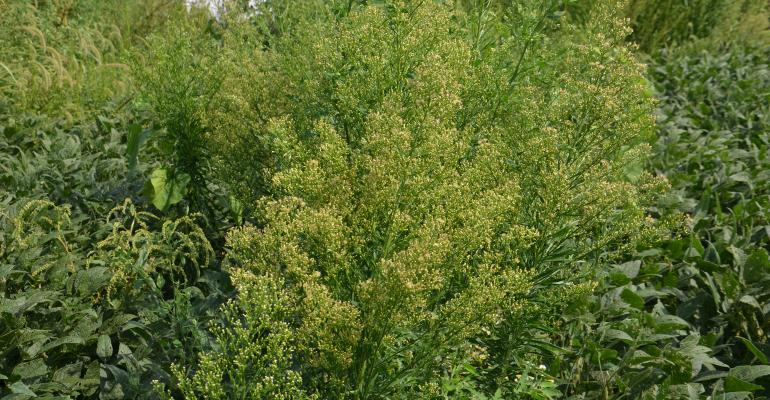Why fall herbicide applications are growing

Soybean Pest Beat: Pick up several possible pluses by spraying this fall.
Sep 12, 2018
Fall herbicide applications on cornstalks going to beans in 2019 are picking up in my area. What are the advantages to spraying now, and what does it gain me next spring? How late can I spray in the fall?
The panel of Indiana certified crop advisers answering this question includes Betsy Bower, Ceres Solutions Cooperative, based in Lafayette; Steve Gauck, Beck’s sales agronomist, Greensburg; and Dan Ritter, agronomist with Dairyland Seed, Wabash.
Bower: Weed control in soybeans continues to be a challenge every year. Even with Extend and Liberty soybeans, we still could use some help by applying fall herbicides. Fall herbicides really help reduce weed pressure going into spring by reducing the number, size and competitiveness of spring weeds. This, in turn, will improve the potential of the spring burndown to work better and set the stage for improved early-season weed control in soybeans.
At Ceres Solutions, we highly recommend it as a strategy to improve overall weed control in soybeans. While it sounds expensive to apply multiple applications of herbicides beginning in the fall, you can choose cost-effective products applied timely to get more bang for the buck. You can spend more total dollars spraying weed control products in-season if you’re trying to control weeds that didn’t get controlled before soybeans were planted.
You can spray rather late into the fall. Even after a fall frost or freeze, if we get a three- to four-day window of above 45 degree F days with active fall weed growth, we can do a pretty good job controlling those fall weeds. I certainly would recommend spraying during the middle of the day when it’s the warmest; stop in good time to allow warmer temperatures to move the chemistry through the plant to the roots. We’ve been known to spray into December if we have actively growing weeds and good soil conditions.
Gauck: Fall spraying is important when targeting marestail, dandelion, Canada thistle and many winter annuals. These hard-to-control weeds in the spring are normally a more effective kill in the fall. Most agronomists will feel comfortable spraying up to a hard freeze, especially if we’re still warming during the day with some sunshine. Once nighttime lows start to dip below 32 degrees F, weed control can become sporadic.
Keep the herbicides simple, like a glyphosate, 2,4-D or dicamba mixture. Don’t count on a fall application to keep fields clean enough to not use a residual in your soybeans next spring. However, a fall application will keep fields cleaner in the spring, therefore allowing soils to warm faster and possibly earlier planting.
Ritter: The biggest advantage is the chance to have a clean, weed-free start in the spring and not battle winter annual weeds at planting. This helps in tillage and no-till situations. It also offers the chance to control winter annual marestail with something other than in-crop herbicide options.
As to how late can you spray? If you’re targeting existing weeds, as in a fall burndown, weeds need to be actively growing for good control. It also depends upon the herbicide you’re using and the manufacturers recommendation. Always read and follow label directions.

